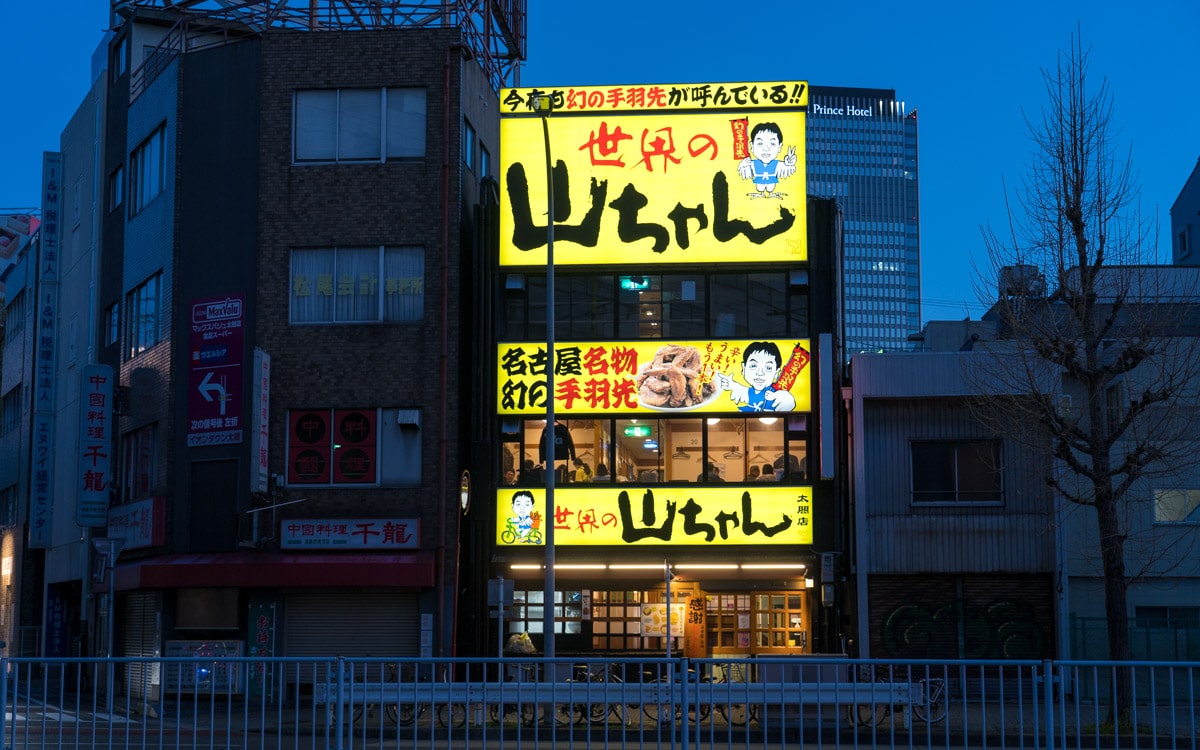
During my recent trip to Japan, I had the opportunity to visit Nagoya for the first time. Despite reading and hearing that Nagoya was less impressive than Tokyo, Osaka, or Kyoto, I was excited to explore a new city. Whenever I travel somewhere new, one of the first things I do is research what to do and what to eat. And, through my research, I discovered Sekai no Yamachan.
Sekai no Yamachan is a chain of popular izakaya restaurants that originated in Nagoya and has expanded across Japan and internationally. Its signature dish is tebasaki, a Japanese-style deep-fried chicken wing seasoned with a spicy pepper blend. Their claim to fame is that they serve the best tebasaki in Nagoya.
In 1981, Yamachan opened its first location in Nagoya, utilizing discarded chicken wings that were overlooked by others. Their spicy seasoning and special sauce made the dish a huge hit, causing the restaurant’s popularity to soar. Currently, there are 69 Yamachan stores in Japan, with 32 of them located in Nagoya. Additionally, Yamachan has expanded its presence beyond Japan with branches in Hong Kong, Taiwan, Thailand, and Malaysia.
It’s difficult to miss Yamachan, especially at night when its large, illuminated signboards light up. Additionally, the restaurant’s iconic logo of a half-man, half-bird figure is hard to miss. The Yamachan logo is prominently featured throughout the restaurant, from the menu to the beer glasses, and even on the front of the restaurant itself. Although Yamachan has numerous locations throughout Nagoya, I visited their branch near Nagoya Station during my recent visit to try out the wings for myself.
Table of Contents
Interior of Sekai No Yamachan
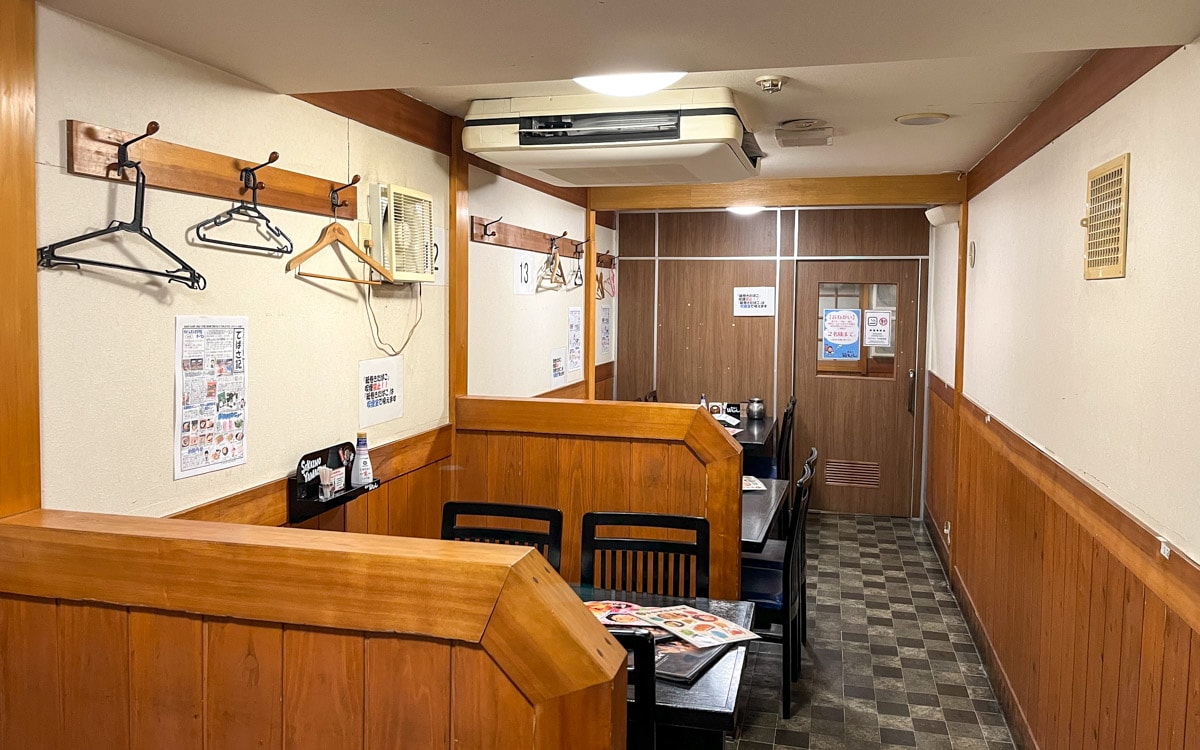
On my visit to Sekai No Yamachan, I arrived late in the evening and ended up being one of the last customers of the night. As a result, I was seated at a table in a small room on the first floor.
Similar to many izakayas in Japan, which are primarily drinking establishments that also serve food, the décor of the place was informal and relaxed.
The atmosphere was cozy, perfect for socializing and conversation. The space was decorated in a simple yet appealing way with bright lighting and wooden tones that added to its charm.
On a busy evening, it was easy to envision this space as an ideal spot to enjoy food, drinks, and good company.
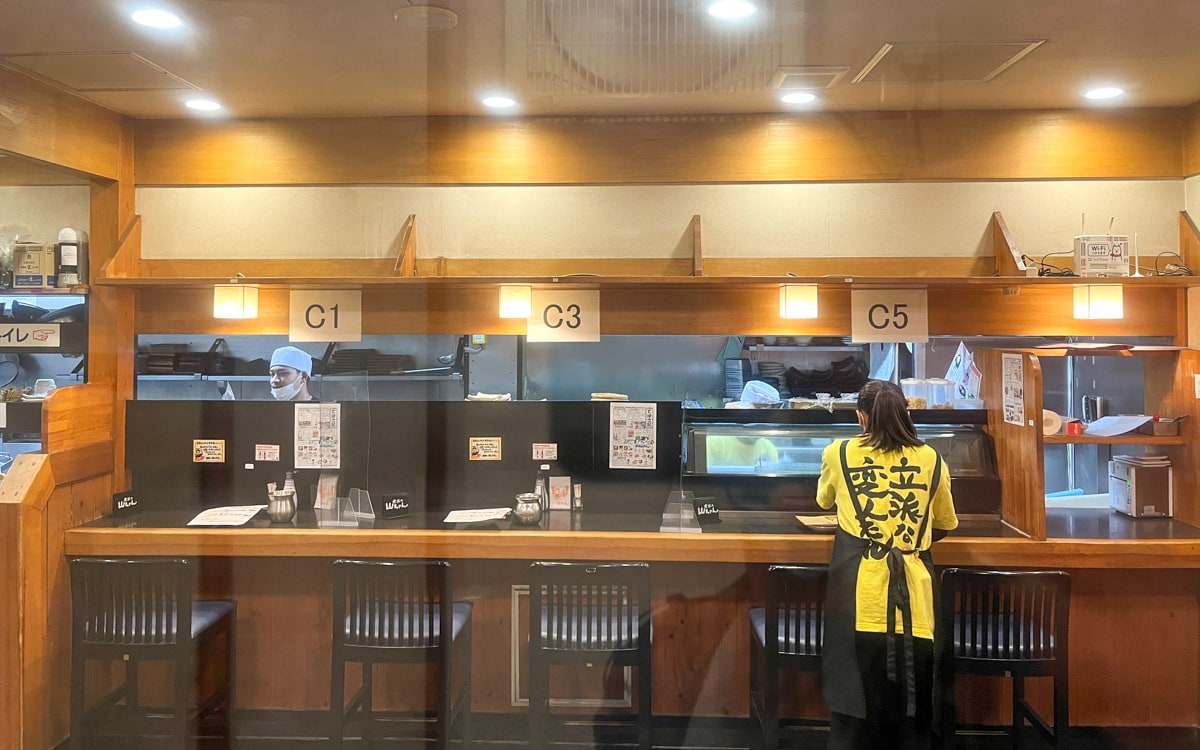
The restaurant also had a counter seating area situated between the front entrance and the back room. From these counter seats, a common characteristic of izakayas across Japan, customers can observe the chefs as they prepare food.
This is my favorite place in the restaurant to sit as I enjoy watching the chefs at work. And, as a solo diner, I find counter seating to be ideal.
If I had arrived earlier and not been the final guest of the night, I think I would have been able to sit at the counter.
Sekai no Yamachan Menu
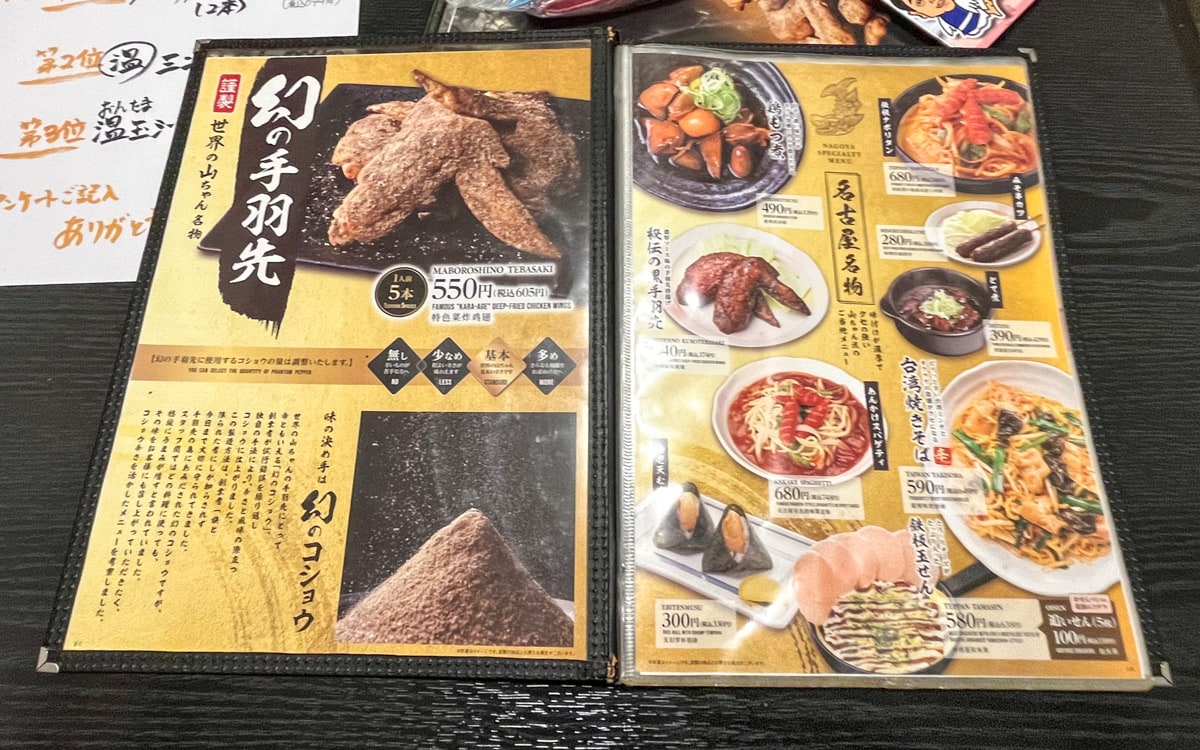
Yamachan, like many izakayas in Japan, featured an extensive menu that spanned several pages with a wide array of dishes. Menu options included chicken, pork, seafood, salads, noodles, fried foods, dumplings, omelettes, rice dishes, and more. The impressive variety of dishes ensured that there was something for everyone. Even if you visited ten times, you can still discover new dishes to try.
The highlight of Yamachan’s menu is their tebasaki, which are Japanese-style deep-fried chicken wings coated in a flavorful seasoning mixture. While simple, these wings have their origins in Nagoya, making them a must-try dish for anyone visiting the city. If you have time for only one item on the menu, I recommend the tebasaki.
Although I typically share a photo of the menu in this section, the menu at Yamachan was too extensive and large to post here. To view the complete menu at Yamachan, the best option is to visit their website at https://www.yamachan.co.jp/english/menu.php, where you can browse the full menu in English.
Maboroshi No Tebasaki (Chicken Wings)
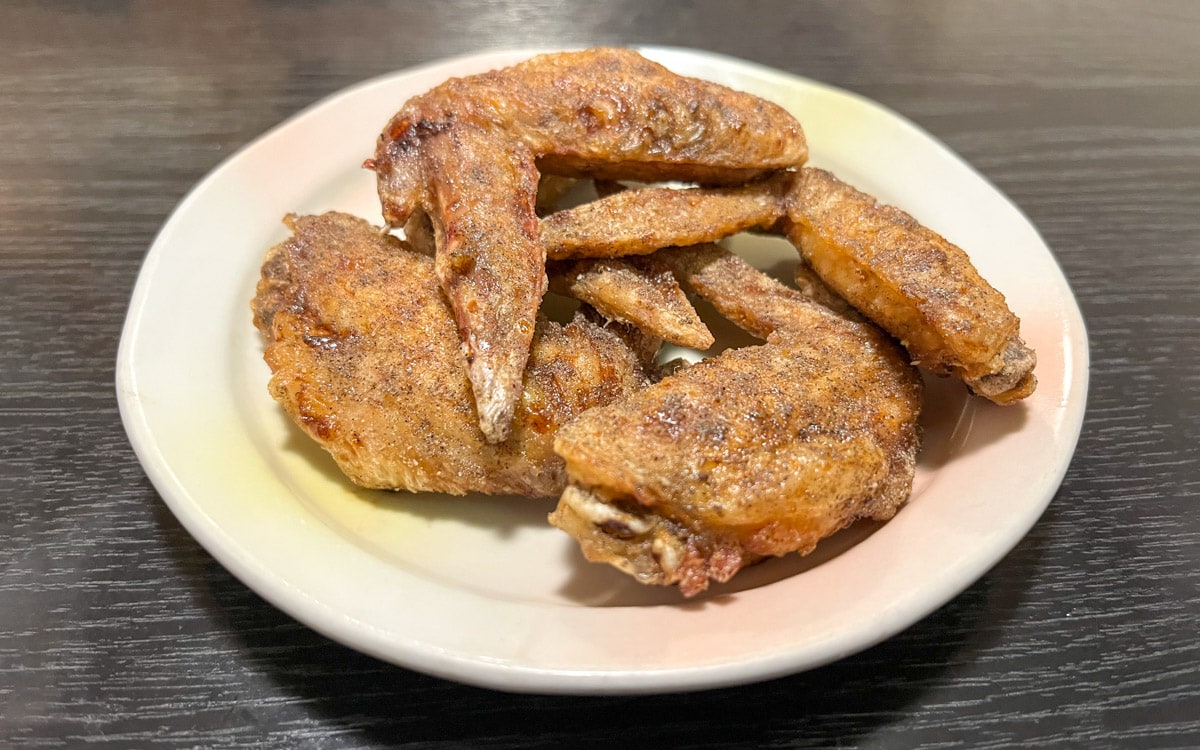
If I could only try one dish at Yamachan, it would have to be the Maboroshi No Tebasaki (550 yen or about $3.93). Tebasaki, which translates to “wing tips,” is a popular Japanese chicken wing dish that originated in Nagoya. To make this dish, chicken wings are seasoned with an assortment of spices and deep-fried until crispy. Each order came with five wings. If you are looking for a plate to share over a cold beer, then this is it.
Yamachan’s chicken wings stand out from the rest thanks to their secret spice recipe known as Phantom Pepper. This unique blend of spices combines spiciness, flavor, and umami. When ordering these wings, you have the option to choose from four different spice levels: none, less, standard, or more. If you enjoy spicy foods, the more spice option may be the way to go. I opted for the standard spice level.
When the plate of chicken wings arrived at my table, the first thing that caught my attention was the smell of the pepper and spices used. The aromas were intoxicating. Though simple in appearance, the wings were golden brown and appeared crispy on the outside. I was excited to try these wings and hoped they tasted as great as they looked.
Each wing had a strong peppery flavor thanks to the seasoning that covered every nook and cranny. A kick of heat lingered slightly after each bite, but it was never overwhelming or overpowering. I found each wing to be moist and juicy on the inside, which complemented the crispy crust on the outside.
While simple, the spicy and peppery seasonings, crispy exterior, and moist meat combined to create a unique and delicious chicken wing.
Doteni (Simmered Pork Entrails)
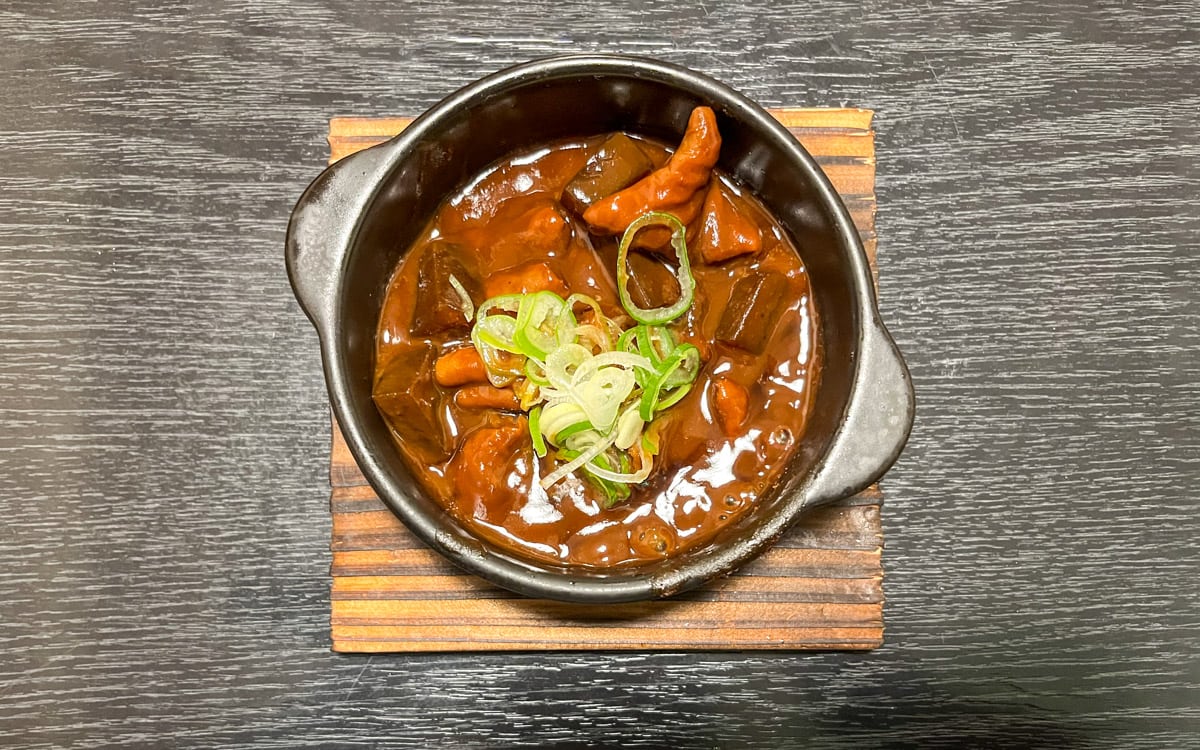
At my server’s recommendation, next up, I ordered the Doteni (390 yen or about $2.78), a dish of pork entrails simmered in red miso. If you don’t know what pork entrails are, they are the internal organs of a pig. This usually includes the heart, liver, kidneys, stomach, intestines, and lungs. Although this dish may seem unfamiliar to most, it is a delicacy in some countries. And, since Nagoya is known for its red miso dishes, I decided to be open-minded and try the dish.
The dish arrived at the table sizzling hot and bubbling. After waiting for it to cool down, I tasted the red miso sauce and was immediately hit by an intense and rich flavor that was both salty and savory. The sauce had a thick consistency that covered each piece of pork. The saltiness of the miso paired well with a cold beer. However, if you prefer less salty dishes, this may not be the best option.
The red miso sauce contained pieces of pork entrails. Each piece varied in texture and flavor. Some of the tender bits were meaty, while others were fatty. As for flavor, the pork tasted earthy and livery, but in a good way. The addition of sliced green onions added texture, color, and a flavorful complement to the richness and saltiness of the red miso.
While I was hesitant to order the doteni, the balance of salty red miso and earthy, tender pork entrails was delicious. But be open-minded if you order the doteni to fully appreciate its unique flavors.
Miso Kushikatsu (Deep Fried Pork Skewers)
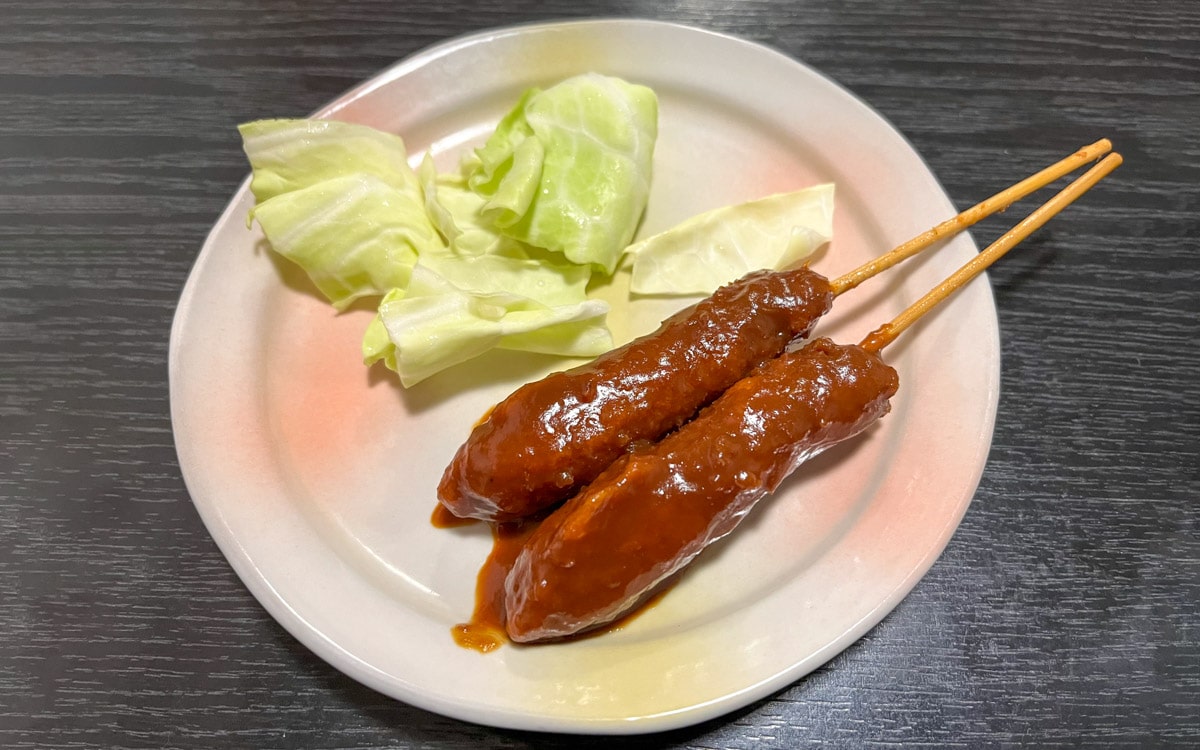
Next up was the Miso Kushikatsu (280 yen or about $2.00), or deep-fried pork skewers in a red miso sauce. And, on the side were a few pieces of sliced cabbage. While not the best-looking dish, I was hoping it tasted better than it looked.
Despite being covered in red miso sauce, the thin breading surrounding the pork remained crispy and crunchy until the last bite. This was unexpected as I assumed the sauce would make the breading soggy. Interestingly, while the same red miso sauce was used from the doteni, I found this miso flavor to be less intense and less salty.
A few pieces of cabbage were served on the side. While the cabbage may have seemed like a wasteful addition, the fresh and crunchy texture of the cabbage complemented the rich flavors of the pork and red miso sauce.
Neginegi Tamagoyaki (Japanese Style Fried Egg)

After eating a series of salty and rich chicken and pork dishes, I was in the mood for something different. Unfortunately, with my other preferred choices already sold out for the night, I decided to go for the Neginegi Tamagoyaki (490 yen or about $3.50), a Japanese-style fried egg.
Tamagoyaki is a type of Japanese omelet made by rolling together several thin layers of egg. The egg is often seasoned with ingredients such as soy sauce, mirin, or dashi. Having tasted tamagoyaki several times during my trips to Japan over the years, I was excited to try the tamagoyaki at Yamachan.
The omelet was thicker and larger than any I had tried in the past. I had anticipated its texture to be light and airy, but I found the texture to be dense, similar to a Western-style omelet. Despite this, the omelet was not dry and I found its interior to be more creamy.
Mixed in with the eggs were sliced green onions, which added color and texture. Served on the side was grated daikon radish. Even with the green onions, daikon, and soy sauce, I found the omelet to be quite bland in flavor.
Unfortunately, the Neginegi Tamagoyaki served at Yamachan was my least favorite dish of the night. I found the omelet to be bland, and its texture did not live up to my expectations. I wanted it to be airy, light, and flavorful, like the versions of tamagoyaki I have tried in the past. This version fell short and left me wanting more.
Service
On my visit to Yamachan, I arrived at the restaurant an hour before closing. I was expecting a long line, but only one group was ahead of me. As it turned out, I might have been the last customer of the night. I noticed that the restaurant turned away guests who arrived after me. Despite the proximity to closing time, the service I received was efficient and friendly.
There was a language barrier, but I found the servers to be friendly and helpful. While the menu did include English descriptions, I appreciated how the staff pointed at certain dishes to communicate their favorite menu items to me.
Other than that, the food arrived quickly and accurately. Despite being a tourist unable to speak Japanese, I appreciated the service I received from Yamachan, especially given how close they were to closing.
Conclusion
While Nagoya may not be as well-known for its cuisine as other Japanese cities like Tokyo or Osaka, it has a unique food scene worth exploring.
If you’re looking for a great dining option in Nagoya, be sure to check out Sekai No Yamachan. This affordable and casual izakaya is the perfect place to try many of Nagoya’s unique dishes including tebasaki and doteni. The extensive menu featured a wide variety of Japanese dishes and drinks including yakitori, karaage (Japanese fried chicken), kushikatsu (deep-fried skewers), sashimi, beer, and sake.
Although I arrived at Sekai No Yamachan right before closing, the atmosphere still felt lively and vibrant, making it the perfect spot to eat and drink with a group of friends.
Though it is a chain and there are many great dining options in Nagoya, I highly recommend a visit to Sekai No Yamachan. It offers an affordable and enjoyable izakaya experience with great food, service, and ambiance.
Pros
- The tebasaki (chicken wings) are some of the best in Japan
- Affordable
- Extensive menu
- Cozy and inviting ambiance
- Friendly service
Cons
- The Neginegi Tamagoyaki was disappointing
- Certain menu items were sold out
Hours
Monday-Saturday: 5:00PM-12:15AM
Sunday: 5:00PM-11:15PM
Address
1 Chome-1-16 Taiko, Nakamura Ward, Nagoya, Aichi 453-0801, Japan
GPS Coordinates: 35.16712,136.88268
Map
Website
https://www.yamachan.co.jp/english/Last Updated on April 12, 2024
Related Posts